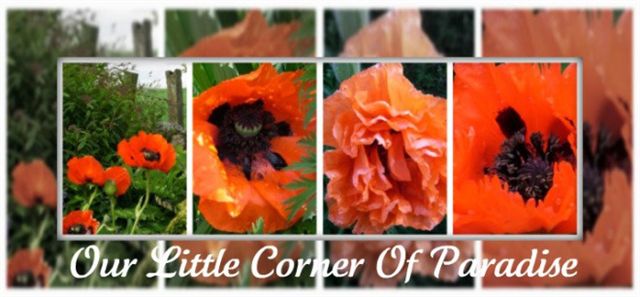Viola, the botanical name for pansy and violet.
 Growing just outside our front door are posies of pretty perennial violas, which create a mass of low growing colour in shades of blue, purple, indigo and violet. The plants thrive in little spaces deliberately left between paving slabs, which my husband laid. The reasons why I chose to position them there will become evident.
Growing just outside our front door are posies of pretty perennial violas, which create a mass of low growing colour in shades of blue, purple, indigo and violet. The plants thrive in little spaces deliberately left between paving slabs, which my husband laid. The reasons why I chose to position them there will become evident.
 Their habit is clump forming which makes them ideal for growing along the front of a border and along the edges of paths. Being shade tolerant they also do well under shrubs and roses. I grow the white viola cornuta under our rugosa hedge, where, on Summer evenings they draw the eye, owing to their resemblance to little white butterflies.
Their habit is clump forming which makes them ideal for growing along the front of a border and along the edges of paths. Being shade tolerant they also do well under shrubs and roses. I grow the white viola cornuta under our rugosa hedge, where, on Summer evenings they draw the eye, owing to their resemblance to little white butterflies. Although violas are similar to pansies, there are many differences. Pansies have larger heads, tend to be more straggly, are more often annual or biennial, can be badly affected by heavy rain, and have a shorter growing season. That is not to say that I do not grow them in our garden. I love the colourful frilly-headed varieties with their velvety texture, and find them ideal for growing in pots and troughs.
Although violas are similar to pansies, there are many differences. Pansies have larger heads, tend to be more straggly, are more often annual or biennial, can be badly affected by heavy rain, and have a shorter growing season. That is not to say that I do not grow them in our garden. I love the colourful frilly-headed varieties with their velvety texture, and find them ideal for growing in pots and troughs. The earliest violas I remember as a child were the little heartsease, or Johnny Jump Ups, growing wild in fields. The first year we created the garden here, I sowed several packets of them and through the years they have seeded themselves around, beautifying the paths and our scree bed, and creating a striking effect.
The earliest violas I remember as a child were the little heartsease, or Johnny Jump Ups, growing wild in fields. The first year we created the garden here, I sowed several packets of them and through the years they have seeded themselves around, beautifying the paths and our scree bed, and creating a striking effect. Under our potentilla hedge I grow cousins of the viola, little violets with purple heart-shaped leaves. The flower is similar to the viola but at the end of each petal there is a spur. As their name suggests, they are violet in colour and are sweet scented like the viola odorata. Apart from their intrinsic beauty, I find violas, pansies and violets so irresistible, they are essential plants in our cottage garden at Barleycorn.
Under our potentilla hedge I grow cousins of the viola, little violets with purple heart-shaped leaves. The flower is similar to the viola but at the end of each petal there is a spur. As their name suggests, they are violet in colour and are sweet scented like the viola odorata. Apart from their intrinsic beauty, I find violas, pansies and violets so irresistible, they are essential plants in our cottage garden at Barleycorn.


















































